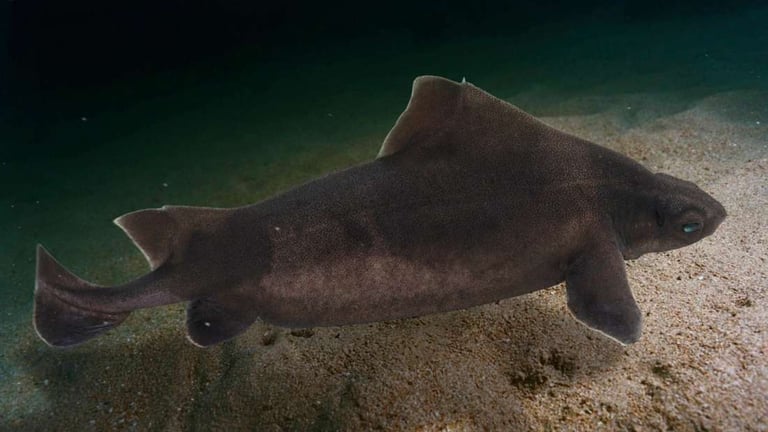First-Ever Leucism Case in Endangered Spotted Roughshark Discovered Off Albania Coast
November 4, 2024
The shark, which was caught in a trawler's net, measured 64.5 centimeters in length and weighed 2.4 kilograms, displaying a pale coloration with white-gray spots, contrasting with the typical dark gray to brown of its species.
A research team led by shark expert Andrej Gajić has identified a pigment disorder in a spotted roughshark, marking the first documented case of leucism in this species.
Most pigment disorders in marine life are genetically driven, but factors such as hormonal changes and environmental stressors like increased temperature and inbreeding also need further investigation.
The spotted dogfish, another small shark species, is also classified as endangered and appears on the Red List of threatened species.
This rare deep-sea shark, known scientifically as Oxynotus centrina, was discovered off the coast of Vlora, Albania.
The spotted roughshark is classified as endangered and is listed on the Red List of Threatened Species due to its declining population.
Preferring deep waters between 50 and 600 meters, the spotted roughshark is rarely seen by humans, making it one of the ocean's most mysterious species.
Current research efforts in the Mediterranean also focus on the last remaining white sharks, indicating ongoing studies into shark populations in the region.
Elias Neuman, a marine biologist and photographer, shared the discovery of the shark on Instagram, emphasizing the rarity of encountering this species due to its deep-water habitat.
In related news, a tourist in Croatia recently spotted two sharks on a beach, highlighting the rarity of shark encounters in the Adriatic region.
Gajić suggested that the pigment disorder observed in the shark may be genetically linked or influenced by environmental factors, including human-induced stress and temperature changes, which require further study.
Summary based on 3 sources


